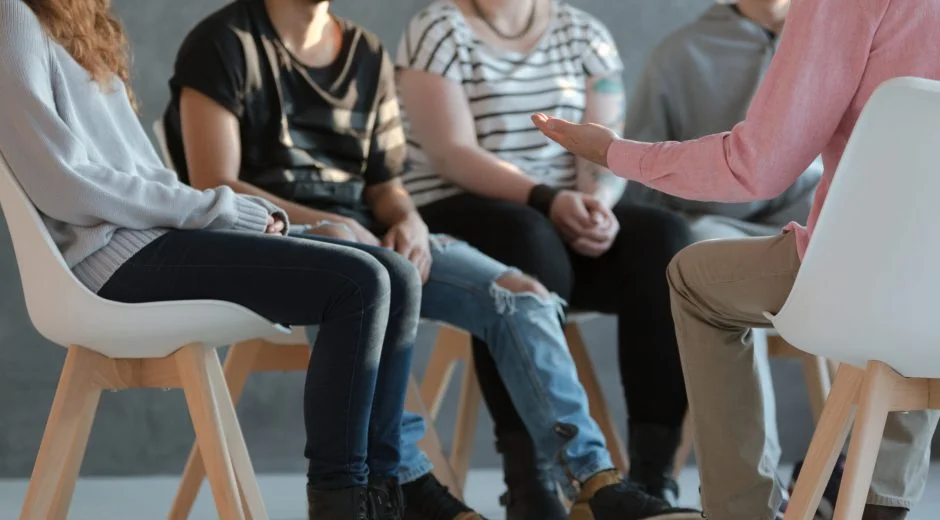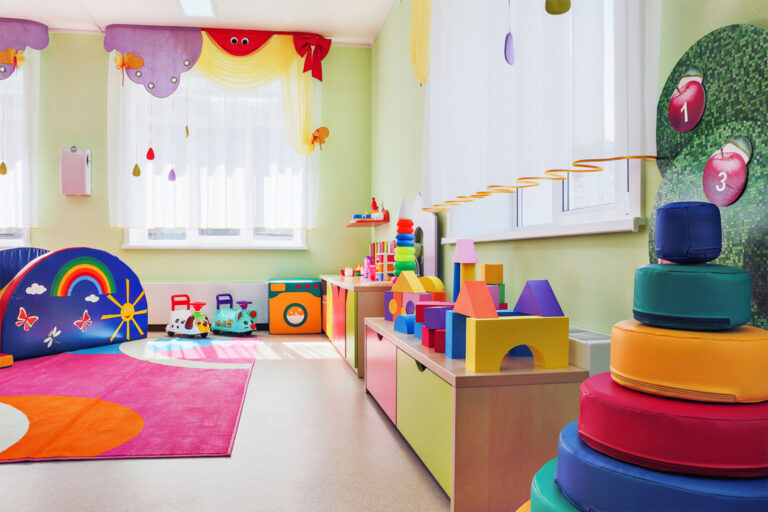Today, we no longer have need rows of student desks. Educators are now changing traditional classrooms into lively learning spaces. They use flexible seating to create this change, allowing for a more dynamic and personalized classroom use. This approach focuses on students and offers different seating options. Students can pick where and how they learn best. By having choices, flexible seating helps make the learning environment more engaging and welcoming for everyone.
Understanding Flexible Seating
Imagine a classroom full of energy. Some students work together at a table. Others sit on a soft rug with their books. Some even stand while they study. This shows a classroom that uses flexible seating.
Flexible seating moves away from the old “one-size-fits-all” plan. It understands that each student has different needs and likes when learning. This approach helps students take part in their education. They get to choose how they learn best.
What is Flexible Seating?
Flexible seating is a setup where students are not stuck in regular desks and chairs. Instead, it offers different kinds of classroom furniture. This can include seats that change height, standing work options, or comfy cushions and beanbags.
The great thing about flexible seating is how it can change and adjust. A new position or setting can really help a student focus and engage better. For example, consider a student who has trouble staying still for a long time. Giving them options like a wobble chair or a standing desk can help them concentrate and take part in class much better, as well as provide an overview of what their peers are doing.
Flexible seating is not just about having various chairs or desks. It’s about making a learning space that meets the physical, emotional, and mental needs of all students.
The Evolution of Classroom Design
Classroom design has changed a lot from the old days when student desks were mostly in rigid rows. The traditional setup often missed the needs of students. It focused more on being neat and uniform than on comfort and engagement.
As people realized how a good learning space can help student performance, teachers started to look at classrooms in a new way. They saw that a lively and interesting environment could boost student motivation, teamwork, and academic success.
Because of this change in thinking, classrooms moved away from fixed rows of desks. They created spaces that are flexible and can change easily. Now, classrooms have comfortable furniture, places for teamwork and individual work, and they allow for student choice and movement. This change in classroom design shows a better understanding of how physical space affects learning.
Benefits of Flexible Seating in Education
The benefits of using flexible seating in schools are many. It goes beyond comfort. It helps students do better in their studies, supports their feelings, and improves behavior. When students get to choose where they sit, they take charge of their own space. This can make the classroom a better place to learn.
Flexible seating can also make learning more exciting and engaging for students. This might lead to more motivation, active participation, and a greater love for learning.
Promoting Student Engagement and Participation
One big benefit of flexible seating is that it helps students get more involved and participate. When students can choose where and how they learn, they feel more comfortable and focused. This way, they care more about their education.
Flexible seating offers various learning opportunities and fits different learning styles. Students can gather for group talks on a comfy rug or relax in a quiet corner for some reading. They can pick the best setting that meets their needs at the moment.
Here are some ways flexible seating can help students get more engaged:
- Increased Comfort and Focus: Comfortable seating can help students pay attention more and reduce distractions.
- Choice and Ownership: When students have a voice in their learning space, it gives them pride in what they do and gets them more involved.
- Variety and Movement: Being able to switch between different seating options during the day keeps students alert and interested.
Fostering Independence and Responsibility
Flexible seating is more than just moving furniture around. It’s about building a classroom culture that supports independence and responsibility. When students can choose where to sit, they also learn to manage their own learning space. This helps them make choices that can boost their learning.
When students see how their seating choices affect their focus and engagement, they gain self-awareness and self-regulation skills. For example, if a student realizes they can concentrate better in a quiet spot, they might move to a calmer area for tough assignments.
This freedom to choose, along with clear rules and guidelines, helps students take charge of their learning space. It also helps create a positive and productive classroom.
Accommodating Diverse Learning Styles
Traditional classrooms often have a hard time meeting different learning styles. This can cause some students to feel left out or bored. Flexible seating is a good solution. It gives different options for seating and classroom furniture that fit various needs.
For active learners, seats like wobble chairs or standing desks let them move around while studying. Visual learners may do better sitting close to a whiteboard or in bright areas. Flexible seating lets students choose places that make them feel comfortable. This helps them learn better.
This method not only makes the classroom more welcoming but also recognizes and values the unique skills and likes of every student.
Implementing Flexible Seating Strategies
Transitioning to a flexible seating classroom takes planning and a change in how we think. It’s not just about swapping desks for beanbags. It’s about carefully redesigning the learning space to fit the needs of students better.
The main point is to work together on this change. Include students in the process. Ask for their ideas about seating, classroom setup, and how they want their learning space to look.
Starting with a Flexible Mindset
Before you start arranging furniture or making seating plans, it’s important to have a flexible mindset. Flexible seating is not just about the physical space; it’s also about how we view and approach learning. This matters a lot for a new teacher who is just getting started.
Understand that there isn’t a single answer that fits everyone. What is good for one student or classroom may not help another. Be open to trying new things, watching what works, and changing things as needed.
Involve your students in this process. Ask them for their thoughts on seating setups, talk about different choices, and let them feel in charge of their learning space. Keep in mind, a flexible classroom thrives when everyone works together and adjusts.
Choosing the Right Furniture and Layout
The next step is to choose furniture that fits your plan for flexible seating. Think about different types: traditional desks, standing desks, soft seating like beanbags and cushions, wobble chairs, stools, and even open floor space for those who like to spread out.
The layout of your classroom matters too. Make different zones for activities like group work, solo work, and reading spots. This can help students move smoothly between tasks and keep everything organized while still being flexible.
Don’t worry about spending a lot of money at once. You can add flexible seating options to your classroom over time. Start by bringing in a few new items and see how the students react before making bigger changes.
Creating Zones for Varied Activities
One important part of successful flexible seating is how you organize the classroom. Set up different areas for various activities. This will help students move smoothly between individual work, group projects, and lessons for the whole class.
Think about creating a reading corner. Use cozy chairs or beanbags so students can enjoy a good book. You might also want a collaboration station with a big table or whiteboard. This area can help with group projects and brainstorming.
Make sure to clearly label each area and tell students what each one is for. This will help them feel more organized and understand the flexible environment better. The aim is to create a learning space that is flexible, fun, and supports different learning activities.
Challenges and Considerations
The good things about flexible seating are clear. However, it’s important to also recognize possible problems and handle them early. Open talks with everyone involved, tackling fairness and access issues, and keeping classroom behavior in check are key parts of making it work well.
If teachers expect challenges and plan for them, they can make the switch to flexible seating easy. This helps every student learn better.
Addressing Equity and Accessibility
When using flexible seating, it’s important to make sure every student can use the seating and learning areas in the classroom. Pay attention to what each student needs, especially those with physical challenges or sensory issues.
For instance, students in wheelchairs may need special spaces to move easily. Others may need chairs that give better back support. Also, think about how different textures or movements may affect some students. Offering different seating choices can help meet these needs.
Always remember that fairness and inclusion are very important. Try to build a classroom that is welcoming and supports the various needs of all students.
Managing Classroom Behavior and Movement
A common worry with flexible seating is how to manage behavior and movement in the classroom. Giving students choices can be good, but it’s important to set clear rules and steps for using the seating properly.
Start by teaching students how to move between different seating areas. Show them how to use the furniture the right way and how to respect what their classmates choose. Regularly remind them of these rules and deal with any misuse quickly.
Think about having a system where students sign out for certain seating areas or switch options during the week. This can stop students from claiming a spot for themselves and helps everyone get a fair chance at their favorite seating.
Budgeting and Funding for Flexible Seating
Budgeting constraints are often a concern when it comes to implementing flexible seating. However, creating a dynamic and adaptable learning environment doesn’t have to break the bank. Many affordable options and creative solutions can help transform your classroom without overspending.
Start by exploring low-cost alternatives. Beanbags, cushions, and even sturdy cardboard boxes can be used to create comfortable seating nooks. Reach out to local businesses for donations— you might be surprised by the used furniture or materials they’re willing to contribute.
Consider applying for grants or crowdfunding your flexible seating project.
Tips for Transitioning to a Flexible Seating Classroom
Transitioning to a flexible seating classroom takes time and effort. It needs careful planning and teamwork. It is not just about moving furniture around. It is about changing how we think and the way we feel in the classroom.
When teachers focus on students’ needs, they can build a space that helps students feel engaged, become independent, and enjoy learning.
Gaining Buy-in from Stakeholders
Before you make big changes to your classroom, it is important to get support from key people, like students, parents, and school leaders. Talk openly about why flexible seating is good. Explain how it can help students learn and get more involved.
Share studies or articles that show how flexible seating can improve student grades, behavior, and the classroom environment. Address any worries ahead of time and be ready for feedback.
Invite people to see your classroom or others that use flexible seating well. Watching it in action can help ease doubts and create excitement about this new way to learn.
Training and Professional Development for Teachers
Professional development is very important for using flexible seating successfully. Even teachers with a lot of experience need to learn new skills for managing their classrooms and planning lessons. This is especially true for new teachers who want to try out new ways of teaching.
To get better, you can attend workshops or conferences about flexible seating, classroom design, or new learning spaces. It helps to find mentors or teachers who have experience with flexible seating. They can give advice and support. Working together with other teachers lets you share useful tips, struggles, and successes.
By continuing to learn and grow as educators, teachers can improve their skills. This helps them create lively and interesting classrooms for their students.
Iterative Implementation and Feedback Loops
Remember, using flexible seating is not just a one-time action; it’s an ongoing journey. You need to watch how students react, think about it, and be ready to change based on what they need and their input. Start with a few flexible seating options and slowly add more as you and your students get used to this new way of learning.
Keep an eye on how students use the different seating options and change things when needed. Some seating setups may work great for some activities and not for others, and that is okay. Flexible seating is about finding what fits best for your students and your teaching style.
Ask students for their feedback often. Inquire about what they like, what they want to change, and what ideas they have for making their learning space better. Their opinions are very important in creating a student-centered classroom.
Future Trends in Flexible Seating and Classroom Design
As technology changes education and we learn more about how students learn, classroom design will change too. The future of flexible seating looks lively and full of new ideas. It will bring more customized learning environments.
We can expect schools to use more technology and focus on sustainable, eco-friendly materials. There will also be a stronger focus on what students want and how they can help design their own learning spaces.
Integration with Technology and Digital Tools
As technology plays a bigger role in education, we will see digital tools and resources blending smoothly into flexible seating setups. Think about students sitting comfortably in beanbags or working together in shared spaces. They could be using online learning platforms or taking virtual field trips with VR headsets.
Flexible seating can help bring technology into the classroom. It can create adaptable areas where students can work alone or with others on their devices. This mix of technology and flexible seating can offer exciting and engaging learning experiences.
For example, a classroom could have a special tech area with cozy seats and charging spots. Here, students can work on research, make digital presentations, or tackle coding projects. The ways to mix technology and flexible seating are many and always changing.
Sustainability and Eco-friendly Materials
As schools focus more on being eco-friendly, we can expect to see more sustainable materials and practices in how classrooms are designed. This means using classroom furniture made from recycled or green materials. It also includes adding natural elements to the space and cutting down on waste by being smart about what we use.
Picture classrooms with flexible seating options made from bamboo, reclaimed wood, or recycled plastics. These materials not only help the environment but also teach students about being sustainable and using resources wisely.
In addition, bringing in natural things like plants, sunlight, and views of nature can help create a calm and inspiring place to learn. Designing classrooms with sustainability is not just a trend. It is a duty that teachers and schools should take on to build healthier and more eco-friendly spaces for students.
The Role of Student Voice in Classroom Design
The future of classroom design depends on recognizing that students actively grow their learning spaces. Their ideas, likes, and needs should be key throughout the design process. This includes choosing seating arrangements and making special learning areas.
When we let students share their thoughts about classroom design, they feel a sense of ownership and belonging. This leads to better and more exciting learning spaces. By including students in the decision-making process, teachers show they care about making a true student-centered learning environment.
We can get student input through surveys, suggestion boxes, or even design meetings where students come together to share ideas and solutions for their perfect learning space. When students feel heard and appreciated, their involvement increases, and they thrive in a space made for them.
Conclusion
In conclusion, a classroom with flexible seating creates an environment that is exciting and helps students engage more. It allows for independence and works well for different ways of learning. Teachers can make a positive change by choosing the right furniture and setting up different activity areas. Doing so helps to include everyone and increases participation. However, teachers need to think about issues like fairness, managing behavior, and money. Keeping up with new things like tech use and being eco-friendly helps classrooms stay fresh and modern. With support from everyone involved, regular training, and ways to share feedback, moving to flexible seating can work well. This change can help both teachers and students in their learning journeys.




